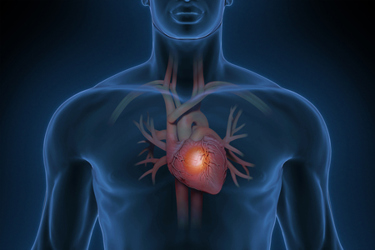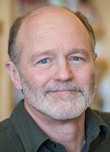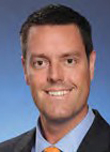Developing Small Molecule Therapeutics To Tackle Heart Failure In DMD Patients
By Kevin Strange, Ph.D., and Michael Christensen, Ph.D., Revidia Therapeutics, Inc.

Duchenne muscular dystrophy (DMD) is an X-linked orphan disease caused by mutations in the dystrophin gene, the largest and most complex gene in the human genome. Dystrophin is a large structural protein that protects muscle cells from damage caused by contraction.1,2 Because of the size and complexity of the dystrophin gene, it’s not possible to fully repair DMD-causing dystrophin mutations or transfer a full-length dystrophin transgene into human cells given current technology. DMD is at present incurable.
While DMD is usually thought of as a skeletal muscle disease characterized by severe, progressive muscle degeneration, it is also a disease of the heart. Most DMD patients die of heart failure in their mid- to late-20s.
The onset of DMD symptoms usually occurs between the ages of 3 and 5, with patients typically losing the ability to walk by their early teens.1,2 Loss of dystrophin function in the heart causes cardiac muscle degeneration, which leads to dilated cardiomyopathy and ultimately to heart failure. Dilated cardiomyopathy causes the ventricles to enlarge, or dilate, and the ventricle walls to thin, weakening the heart’s ability to pump blood. Cardiomyopathy is detectable in DMD patients as young as 10 years old and is present in most patients by their late teens.3-5
Despite the role of DMD cardiomyopathy in mortality, there are no approved treatments, and little effort has been made to develop cardiac therapies. Current DMD cardiac care utilizes steroids and other standard treatments for heart failure, which aim to slow heart damage caused by inflammation, workload, and remodeling.3-5
Genetic Therapies For DMD
A great deal of attention and resources have been focused on development of genetic therapies to treat DMD. Approved genetic approaches in the United States include exon-skipping and gene transfer therapies. Exon-skipping therapies utilize antisense oligonucleotides (AONs) that are designed to “skip” mutated parts of the dystrophin gene. AONs are targeted to specific types of dystrophin mutations in small subsets of DMD patients. Gene transfer therapies utilize viral vectors to deliver a partial or “micro-dystrophin” transgene to skeletal muscle cells.6,7
Exon-skipping and micro-dystrophin gene transfer therapies are not cures for DMD. Both approaches are designed to lessen skeletal muscle symptoms by increasing expression of truncated, partially functional dystrophin proteins. Despite receiving accelerated FDA approval for use in the United States, neither approach has shown consistent, well-established clinical efficacy. Micro-dystrophin gene transfer therapies also pose significant safety concerns.6-10 The FDA’s accelerated approval process for genetic therapies such as these has come under increased scrutiny with recent changes in the institution’s leadership.11
An additional serious drawback of genetic and other skeletal muscle targeted therapies is that they do not address the primary cause of DMD patient death: dilated cardiomyopathy and resultant heart failure. Furthermore, any therapy that significantly improves skeletal muscle function without concomitantly improving heart function may exacerbate cardiac morbidity and mortality. Improved skeletal muscle function requires more blood flow, which puts an added strain on the workload of an already weakened heart. The most effective approach to treating DMD will therefore require the use of a single therapeutic agent or a combination of therapies that address both skeletal and heart muscle dysfunction.
Cardiac Regenerative Medicine And The Challenge Of Stem Cell Therapies
Cardiology has long pinned its hopes for treatment of heart damage on regenerative medicine. Most regenerative medicine companies have focused on the development of stem/progenitor cell transplantation and infusion approaches to mediate heart repair and regeneration. It is now well established that transplanted/infused stem cells do not engraft with heart tissue. Instead, the occasional small and highly variable therapeutic effects of these cells are thought to be due to their ability to secrete factors that stimulate intrinsic repair and regenerative processes, which has been termed the “paracrine hypothesis.”12,13 The nature of these factors and the signaling processes they stimulate are not fully understood.
Despite more than two decades of intensive R&D, no stem cell regenerative medicine therapy has received FDA approval. Stem cell therapies remain challenged by their complexity, limited efficacy, significant manufacturing problems, and high cost.14 A case in point is deramiocel, which is being developed to treat skeletal and heart muscle damage in DMD patients. Deramiocel is an investigational allogenic cell therapy utilizing cultured cardiac progenitor cells administered by infusion once every three months. The infused cells release small vesicles that contain paracrine factors with immunomodulatory and other tissue pro-repair properties.15,16 The FDA recently rejected a marketing application for deramiocel, noting that the investigational therapy “does not meet the statutory requirement for substantial evidence of effectiveness.” Concerns with CMC (chemistry, manufacturing, and controls) were also raised by the FDA.17
A New Approach To Cardiac Regenerative Medicine
Revidia Therapeutics has taken a different approach to cardiac regenerative medicine. The company was founded on the principle that the human heart and other organs possess robust innate repair and regenerative processes that are inactivated shortly after birth. While the notion that the human body is capable of regenerating injured heart muscle may seem far-fetched, human newborns can, in fact, repair myocardial damage and completely recover normal cardiac function after a severe myocardial infarction — an ability that is lost as a newborn matures.18,19 Other newborn mammals have the same ability,20-22 and many animals retain the ability to regenerate complex tissues and organs throughout their lives,23
Revidia’s mission is to develop first-in-class small molecule drugs that reactivate intrinsic cardiac repair and regenerative processes. The company’s lead drug candidate is MSI-1436, the first small molecule shown to activate regeneration in the adult mammalian heart.24,25
MSI-1436 selectively inhibits protein tyrosine phosphatase 1B or PTP1B. High levels of PTP1B activity function as a “molecular brake”26 on tissue repair and regeneration processes. MSI-1436 inhibits PTP1B and releases that molecular brake. The effectiveness of MSI-1436 in stimulating repair and regeneration of cardiac muscle and other tissues has now been demonstrated by Revidia in three animal species and multiple injury models including six types of cardiac injury.
It should be noted that PTP1B was an important pharmaceutical target for treating obesity and type-2 diabetes. Hundreds of lead PTP1B inhibitors have been identified. However, the vast majority of these small molecules targeted the enzyme’s active site, which is highly charged and conserved among multiple other phosphatases. Thus, most PTP1B inhibitors did not progress to clinical trials due to safety concerns, low bioavailability, and/or low membrane permeability.27,28
MSI-1436 is different. First, it is a synthetic form of a naturally occurring aminosterol. Natural products are the original and oldest form of medicines and continue to be a major source of new FDA approved therapies.29 Second, unlike PTP1B inhibitors derived from combinatorial library screening, MSI-1436 targets a unique region of the PTP1B protein distant from its active site. Once bound to this site, MSI-1436 reduces phosphatase activity via a noncompetitive allosteric mechanism.
Competitive Advantages Of Small Molecule Drugs
Small molecules are a mainstay of medicine and the pharmaceutical industry. Compared to other cardiac regenerative medicine therapies in development, small molecules offer competitive advantages of 1) relative cost-effectiveness, 2) ease of delivery, and 3) ready reversibility if an adverse reaction occurs.
The cellular processes that are modulated by MSI-1436 and PTP1B inhibition are well described by Revidia and multiple other independent laboratories. It is particularly noteworthy that these cellular processes are the same as those thought to be activated by stem cell-secreted paracrine factors. The advantages here of a small molecule drug are obvious. Controlling the production and secretion of not fully characterized paracrine factors produced by cultured stem/progenitor cells is at best an enormous technical challenge. This is reflected by the efficacy and regulatory challenges faced by cell-based regenerative medicine therapies.14 In contrast, the chemistry, manufacturing, and administration of a small molecule like MSI-1436 can be readily and tightly controlled.
An important advantage of MSI-1436 is that it already has a well-established human safety profile. In 2008, Genaera Corporation undertook Phase 1/1b clinical trials of MSI-1436 as a potential obesity and type-2 diabetes treatment.30,31 These clinical trials demonstrated that MSI-1436 has a large estimated therapeutic index for treating cardiac injuries. Doses of MSI-1436 that that stimulate tissue regeneration and improve heart function in animal models24 are five to 50 times lower than the maximum well-tolerated dose established by Genaera.
The devastating nature of DMD, the unmet medical need of the main cause of death in DMD patients, our extensive efficacy testing, the numerous advantages of small molecule drugs compared to stem cell-based therapies, the continued challenges of genetic DMD therapies, and, importantly, the established human safety of MSI-1436 have played central roles in our ongoing R&D program and clinical development plans. Revidia has received FDA Orphan Drug designation for the use of MSI-1436 to treat dystrophinopathies (inherited muscle diseases caused by defects in the dystrophin gene). ODD will provide seven years of market exclusivity for MSI-1436 if it is approved for use in DMD patients.
MSI-1436 is now in late-stage preclinical development with planned IND application submission in 2026. If MSI-1436 ultimately shows efficacy in treating DMD cardiomyopathy and is approved for patient use, it will likely lead to improvements in patients’ quality of life, extension of their lifespans, and reductions in the psycho-social impact of the disease on patients and their caregivers. We also envision that MSI-1436 will have many additional regenerative medicine applications beyond DMD cardiomyopathy, not only in the heart but other tissue types as well.
References
- Verhaart IEC and Aartsma-Rus A. Therapeutic developments for Duchenne muscular dystrophy. Nat Rev Neurol. 2019; 15:373-386.
- Yiu EM and Kornberg AJ. Duchenne muscular dystrophy. J Paediatr Child Health. 2015; 51:759-64.
- Duan D, Goemans N, Takeda S, Mercuri E and Aartsma-Rus A. Duchenne muscular dystrophy. Nat Rev Dis Primers. 2021;7:13.
- Buddhe S, Cripe L, Friedland-Little J, Kertesz N, Eghtesady P, Finder J, Hor K, Judge DP, Kinnett K, McNally EM, Raman S, Thompson WR, Wagner KR and Olson AK. Cardiac management of the patient with Duchenne muscular dystrophy. Pediatrics. 2018;142:S72-S81.
- Meyers TA and Townsend D. Cardiac pathophysiology and the future of cardiac therapies in Duchenne muscular dystrophy. Int J Mol Sci. 2019;20.
- Sheikh O, Yokota T. Developing DMD therapeutics: a review of the effectiveness of small molecules, stop-codon readthrough, dystrophin gene replacement, and exon-skipping therapies. Expert Opin Investig Drugs. 2021 Feb;30(2):167-176. doi: 10.1080/13543784.2021.1868434. Epub 2021 Jan 6. PMID: 33393390.
- D'Ambrosio ES, Mendell JR. Evolving therapeutic options for the treatment of Duchenne muscular dystrophy. Neurotherapeutics. 2023 Oct;20(6):1669-1681. doi: 10.1007/s13311-023-01423-y. Epub 2023 Sep 6. PMID: 37673849; PMCID: PMC10684843
- Liu, A. FDA investigates patient deaths after treatment with Sarepta's Duchenne gene therapy Elevidys. Fierce Pharma. Published June 25, 2025 https://www.fiercepharma.com/pharma/fda-investigates-deaths-after-sarepta-duchenne-gene-therapy-elevidys.
- Bayer, M. Sarepta adds black box warning to its Duchenne treatment, cuts 500 workers. Endpoints News, Published July 16, 2025. https://endpoints.news/sarepta-lays-off-500-people-adds-black-box-warning-to-dmd-therapy/?utm_medium=email&utm_campaign=Breaking%20Sarepta%20cuts%20500%20workers%20agrees
%20to%20Elevidys%20black%20box%20warning%20Basic&utm_content=Breaking%20Sarepta
%20cuts%20500%20workers%20agrees%20to%20Elevidys%20black%20box%20warning%20Basic
+CID_d03c5e708030af1273992fd625ae788b&utm_source=ENDPOINTS%20emails&utm_term
=Read%20the%20full%20story. - Masson, G. UPDATE: Pfizer's phase 3 gene therapy trial fails to improve function for boys with Duchenne muscular dystrophy. Fierce Biotech. Published June 12, 2024. https://www.fiercebiotech.com/biotech/pfizers-phase-3-gene-therapy-trial-fails-improve-function-boys-duchenne-muscular-dystrophy
- Fidler, B. Gene therapy faces fresh uncertainty as two more top FDA officials depart. BioPharma Dive. Published June 20, 2025. https://www.biopharmadive.com/news/nicole-verdun-rachael-anatol-fda-leave-gene-therapy/751156/
- Glembotski CC. Expanding the paracrine hypothesis of stem cell-mediated repair in the heart: when the unconventional becomes conventional. Circulation research. 2017;120:772-774.
- Maghin E, Garbati P, Quarto R, Piccoli M and Bollini S. Young at heart: combining strategies to rejuvenate endogenous mechanisms of cardiac repair. Front Bioeng Biotechnol. 2020;8:447.
- Dodson BP and Levine AD. Challenges in the translation and commercialization of cell therapies. BMC Biotechnol. 2015;15:70. doi: 10.1186/s12896-015-0190-4.:70-0190.
- What is Deramiocel? What does CAP-1002 do? DMD Warrior. Published January 2, 2025. https://dmdwarrior.com/what-is-deramiocel/
- McDonald CM, Marbán E, Hendrix S, Hogan N, Ruckdeschel Smith R, Eagle M, Finkel RS, Tian C, Janas J, Harmelink MM, Varadhachary AS, Taylor MD, Hor KN, Mayer OH, Henricson EK, Furlong P, Ascheim DD, Rogy S, Williams P, Marbán L; HOPE-2 Study Group. Repeated intravenous cardiosphere-derived cell therapy in late-stage Duchenne muscular dystrophy (HOPE-2): a multicentre, randomised, double-blind, placebo-controlled, phase 2 trial. Lancet. 2022 Mar 12;399(10329):1049-1058. doi: 10.1016/S0140-6736(22)00012-5.PMID: 35279258
- Feuerstein, A. FDA rejects Capricor’s cell therapy for Duchenne muscular dystrophy. STAT+. Published July 11, 2025. https://www.statnews.com/2025/07/11/fda-rejects-capricors-cell-therapy-for-duchenne-muscular-dystrophy/
- Haubner BJ, Schneider J, Schweigmann U, Schuetz T, Dichtl W, Velik-Salchner C, Stein JI, Penninger JM. Functional recovery of a human neonatal heart after severe myocardial infarction. Circ Res. 2016 Jan 22;118(2):216-21.
- Cesna S, Eicken A, Juenger H and Hess J. Successful treatment of a newborn with acute myocardial infarction on the first day of life. Pediatr Cardiol. 2013;34:1868-1870.
- Porrello ER, Mahmoud AI, Simpson E, Hill JA, Richardson JA, Olson EN and Sadek HA. Transient regenerative potential of the neonatal mouse heart. Science. 2011;331:1078-1080.
- Wang H, Paulsen MJ, Hironaka CE, Shin HS, Farry JM, Thakore AD, Jung J, Lucian HJ, Eskandari A, Anilkumar S, Wu MA, Cabatu MC, Steele AN, Stapleton LM, Zhu Y and Woo YJ. Natural heart regeneration in a neonatal rat myocardial infarction model. Cells. 2020;9:229.
- Zhu W, Zhang E, Zhao M, Chong Z, Fan C, Tang Y, Hunter JD, Borovjagin AV, Walcott GP, Chen JY, Qin G and Zhang J. Regenerative potential of neonatal porcine hearts. Circulation. 2018;138:2809-2816.
- Poss, KD and Tanaka, EM. Hallmarks of regeneration. Cell Stem Cell. 2024; 31:1244-1261
- Smith A, Nguyen K, Rando TA, Zasloff M, Strange K and Yin VP. The protein tyrosine phosphatase 1b inhibitor msi-1436 stimulates regeneration of heart and multiple other tissues. Npj Regenerative Medicine. 2017;2: doi:10.1038/s41536-017-0008-1.
- Strange K and Yin VP. A shot at regeneration. Scientific American. 2019;320:5.
- Cigliola V, Ghila L, Chera S and Herrera PL. Tissue repair brakes: A common paradigm in the biology of regeneration: Concise review. Stem Cells. 2020; 38:330-339.
- Köhn M. Turn and face the strange: a new view on phosphatases. ACS Cent Sci. 2020;6:467-477.
- Stanford SM and Bottini N. Targeting tyrosine phosphatases: time to end the stigma. Trends Pharmacol Sci. 2017;38:524-540.
- Newman, DJ and Cragg GM. Natural products as sources of new drugs over the nearly four decades from 01/1981 to 09/2019. J. Nat. Prod. 2020, 83, 770−803
- Genaera Corporation provides highlights of positive Phase 1 trodusquemine (MSI-1436). 2007. Retrieved from http://www. bloomberg. com/apps/news?pid=newsarchive&sid=aidOnMK7BLM8.
- Genaera presents preliminary Phase 1b data for trodusquemine (MSI-1436). 2007. Retrieved from http://www. prnewswire. com/news-releases/genaera-corporation-provides-highlights-of-positive-phase-1-trodusquemine-msi-1436-data-from-the-north-american-association-for-the-study-of-obesity-annual-meeting-58913682. html.
About The Authors:
 Kevin Strange founded Revidia Therapeutics in 2013 to develop MSI-1436 and other small molecule regenerative medicine therapeutics. He is an internationally recognized biomedical scientist and entrepreneur. Funded for more than 35 years by the NIH, Department of Defense, and private foundations, his research has been published in leading scientific journals including Science, PNAS, Neuron, and Cell. Strange earned his doctorate from the University of British Columbia and conducted postdoctoral training in membrane and renal physiology at the NIH. After a distinguished scientific and leadership career at Harvard Medical School and Vanderbilt University School of Medicine, he became the first president of the MDI Biological Laboratory in 2009, where he established the Kathryn W. Davis Center for Regenerative Biology and Medicine. The Davis center was highlighted twice in the U.S. Congressional Record for its accomplishments, including the discovery of regenerative medicine drug candidates.
Kevin Strange founded Revidia Therapeutics in 2013 to develop MSI-1436 and other small molecule regenerative medicine therapeutics. He is an internationally recognized biomedical scientist and entrepreneur. Funded for more than 35 years by the NIH, Department of Defense, and private foundations, his research has been published in leading scientific journals including Science, PNAS, Neuron, and Cell. Strange earned his doctorate from the University of British Columbia and conducted postdoctoral training in membrane and renal physiology at the NIH. After a distinguished scientific and leadership career at Harvard Medical School and Vanderbilt University School of Medicine, he became the first president of the MDI Biological Laboratory in 2009, where he established the Kathryn W. Davis Center for Regenerative Biology and Medicine. The Davis center was highlighted twice in the U.S. Congressional Record for its accomplishments, including the discovery of regenerative medicine drug candidates.
 Michael Christensen has spent more than 20 years in the pharmaceutical industry and has helped bring more than a dozen drugs to market, including Ozempic (semaglutide), Tresiba (insulin degludec), Isturisa (osilodrostat), Recorlev (levoketoconazole), Micardis (telmisartan), and other drug products in the cardiometabolic space. His experience at both large and small pharmaceutical companies includes clinical trial development and execution, regulatory and medical affairs, and business and marketing operations. He has worked extensively with regulatory bodies including the FDA, Medicare/Medicaid, and Veterans Affairs. In addition to his role at Revidia, Christensen is also the president and chairman of the board of directors at Prometheus Cardiology and Rare Disease, Inc. Christensen earned his Ph.D. in pharmacology at Vanderbilt University and completed his postdoctoral training in immunology at the Genomics Institute of the Novartis Research Foundation (GNF).
Michael Christensen has spent more than 20 years in the pharmaceutical industry and has helped bring more than a dozen drugs to market, including Ozempic (semaglutide), Tresiba (insulin degludec), Isturisa (osilodrostat), Recorlev (levoketoconazole), Micardis (telmisartan), and other drug products in the cardiometabolic space. His experience at both large and small pharmaceutical companies includes clinical trial development and execution, regulatory and medical affairs, and business and marketing operations. He has worked extensively with regulatory bodies including the FDA, Medicare/Medicaid, and Veterans Affairs. In addition to his role at Revidia, Christensen is also the president and chairman of the board of directors at Prometheus Cardiology and Rare Disease, Inc. Christensen earned his Ph.D. in pharmacology at Vanderbilt University and completed his postdoctoral training in immunology at the Genomics Institute of the Novartis Research Foundation (GNF).
